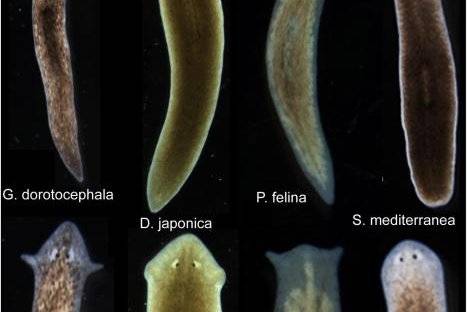ScienceRocks
Democrat all the way!
- Banned
- #1
Researchers report novel approach for single molecule electronic DNA sequencing
September 21, 2012
Read more at: Researchers report novel approach for single molecule electronic DNA sequencing
September 21, 2012
Schematic of single molecule DNA sequencing by a nanopore with phosphate-tagged nucleotides. Each of the four nucleotides will carry a different tag. During SBS, these tags, attached via the terminal-phosphate of the nucleotide, will be released into the nanopore one at a time where they will produce unique current blockade signatures for sequence determination. A large array of such nanopores will lead to high throughput DNA sequencing. (Phys.org)
DNA sequencing is the driving force behind key discoveries in medicine and biology. For instance, the complete sequence of an individual's genome provides important markers and guidelines for medical diagnostics and healthcare. Up to now, the major roadblock has been the cost and speed of obtaining highly accurate DNA sequences. While numerous advances have been made in the last 10 years, most current high-throughput sequencing instruments depend on optical techniques for the detection of the four building blocks of DNA: A, C, G and T. To further advance the measurement capability, electronic DNA sequencing of an ensemble of DNA templates has also been developed.
Recently, it has been shown that DNA can be threaded through protein nanoscale pores under an applied electric current to produce electronic signals at single molecule level. However, because the four nucleotides are very similar in their chemical structures, they cannot easily be distinguished using this technique. Thus, the research and development of a single-molecule electronic DNA sequencing platform is the most active area of investigation and has the potential to produce a hand-held DNA sequencer capable of deciphering the genome for personalized medicine and basic biomedical research.
A team of researchers at Columbia University, headed by Dr. Jingyue Ju (the Samuel Ruben-Peter G. Viele Professor of Engineering, Professor of Chemical Engineering and Pharmacology, Director of the Center for Genome Technology and Biomolecular Engineering), with colleagues at the National Institute of Standards and Technology (NIST) led by Dr. John Kasianowicz (Fellow of the American Physical Society), have developed a novel approach to potentially sequence DNA in nanopores electronically at single molecule level with single-base resolution. This work, entitled "PEG-Labeled Nucleotides and Nanopore Detection for Single Molecule DNA Sequencing by Synthesis" is now available in the open access online journal, Scientific Reports, from the Nature Publication group.
Read more at: Researchers report novel approach for single molecule electronic DNA sequencing


